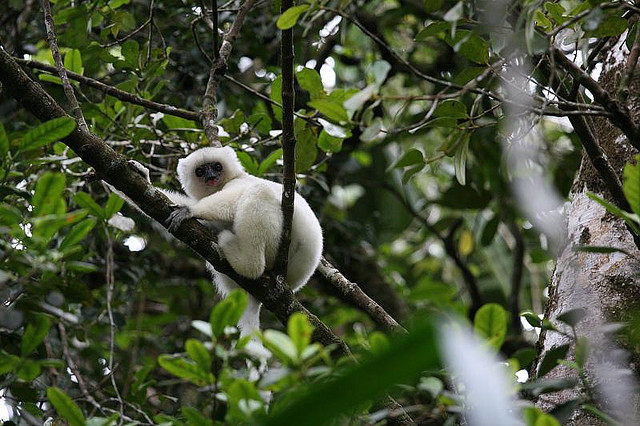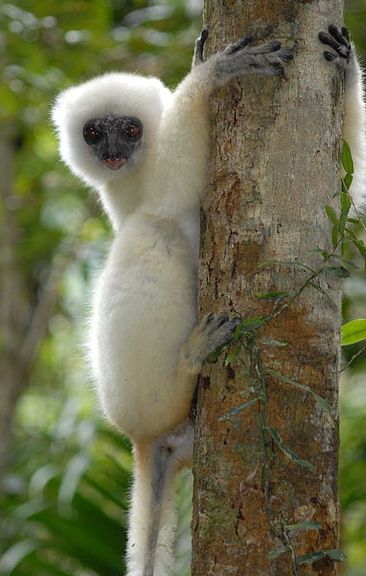
Silky Sifaka - An image by muzzanese
Diversified landscape of Madagascar which has remained far from the human intervention for millions of years, has become the source of tremendous and unique flora and fauna on the planet earth. We time to time add posts related to the landscape, flora and fauna of Madagascar and today we’ll also tell you about another distinctive lemur which is known as Silky Sifaka or Silky Simpona. This large and silky white lemur is native to the Northeastern Madagascar and it is listed as the world’s most critically endangered primates of the lovely planet by IUCN. The species is only found within a few protected areas in the rainforests of northeastern Madagascar, with the majority of the remaining population in Marojejy National Park and Anjanaharbic-Sud Special Reserve.

Silky sifaka weighs between 11 and 14 pounds and measures up to three-and-a-half-feet long. The most attractive feature of Silky Sifaka is obviously its long and white fur having silky texture. Not all individuals are completely white: some have silver-gray or black tints on the crown, back, and limbs. The base of the tail (“pygal region”) can be yellow. The ears and face are hairless, and the skin may be a mix of pink and black, completely black, or completely pink. The tips of the ears protrude slightly above the fur on the rest of the head.Its eyes have a deep orange-red coloration.

According to some studies, the silky sifaka spends most of its day resting and feeding (approximately 44.4% and 25% respectively). It also devotes approximately 16.8% of the day to social behavior, such as personal and social grooming and play. The rest of the day is spent traveling and sleeping. The silky sifaka’s diet is similar to that of other eastern rainforest sifakas, consisting primarily of leaves and seeds. It is highly varied and includes many plant species. Like all other lemurs, the silky sifaka is a seasonal breeder and it is thought that it mates only one day a year during the start of the rainy season sometime in December or January. Infants are born six months later in June or July. Females typically give birth to a single infant once every two years, although births in consecutive years have been observed.

We the people of the lovely planet are the biggest threat to this large lemur. Some of us hunt the threatened lemur for food. Others are involeved in burning their forest habitat to make room for rice fields. Time is to save Silky Sifaka of Madagascar from loggers also who destroy their natural habitat when they cut down, illegally, valuable rosewood trees. Its population size is estimated to range between 100 and 1,000 individuals, while the number of mature individuals is thought to be less than 250.